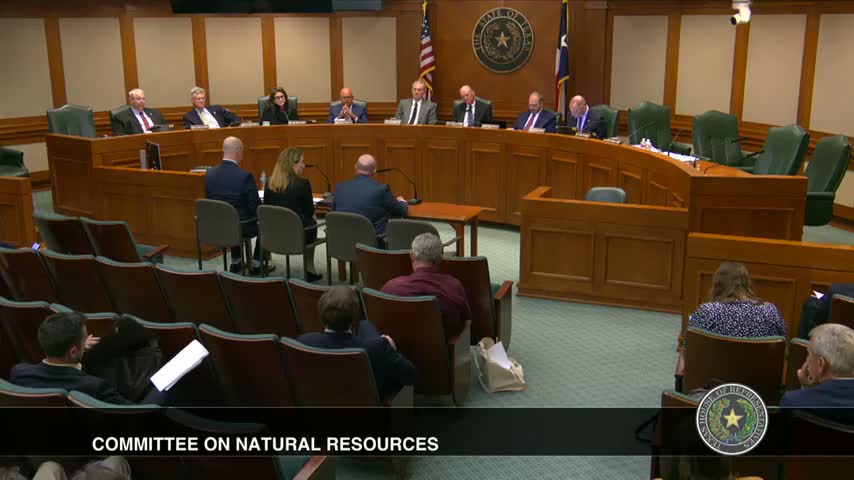Texas faces $154 billion water infrastructure crisis
September 24, 2024 | Committee on Natural Resources, HOUSE OF REPRESENTATIVES, Legislative, Texas
This article was created by AI summarizing key points discussed. AI makes mistakes, so for full details and context, please refer to the video of the full meeting. Please report any errors so we can fix them. Report an error »

In a recent government meeting, Texas lawmakers and water policy experts gathered to discuss the pressing need for enhanced water infrastructure funding in the state. The discussions centered around the implementation of Senate Bill 28, which allocated an initial $1 billion to the Texas Water Fund, a significant step but still insufficient to meet the state's long-term water needs.
Jeremy Mazer, Director of Natural Resources and Infrastructure Policy for Texas 2036, emphasized that Texas will require an estimated $154 billion over the coming decades to address critical water supply and infrastructure challenges. He highlighted the necessity for a diversified water supply portfolio, including water reuse strategies, and the urgent need to repair aging drinking water and wastewater systems. Mazer projected that the economic costs of failing to address these issues could reach nearly $320 billion by 2039, equating to the size of the current two-year state budget.
Stacy Steinbach, Executive Director of the Texas Water Conservation Association, echoed these concerns, noting a current funding gap of $20 billion for state water plan projects and an additional $80 billion needed for general water and wastewater infrastructure. She pointed out that population growth and extreme weather are exacerbating these challenges, making it imperative for the state to secure additional funding sources.
Heather Harwood, representing the Texas Water Supply Partners, reinforced the importance of the Texas Water Fund, which received overwhelming voter support in November 2023. She warned that neglecting water infrastructure could lead to significant economic losses, potentially exceeding $150 billion if state water plan projects are not implemented.
The consensus among the speakers was clear: Texas must prioritize water infrastructure investment to sustain its economic growth and public health. Lawmakers are urged to consider establishing a dedicated revenue source for the Texas Water Fund, akin to funding mechanisms used for state parks and highways, to ensure a reliable and long-term financial strategy for water infrastructure development. As the state faces increasing demands on its water resources, the urgency for action has never been greater.
Jeremy Mazer, Director of Natural Resources and Infrastructure Policy for Texas 2036, emphasized that Texas will require an estimated $154 billion over the coming decades to address critical water supply and infrastructure challenges. He highlighted the necessity for a diversified water supply portfolio, including water reuse strategies, and the urgent need to repair aging drinking water and wastewater systems. Mazer projected that the economic costs of failing to address these issues could reach nearly $320 billion by 2039, equating to the size of the current two-year state budget.
Stacy Steinbach, Executive Director of the Texas Water Conservation Association, echoed these concerns, noting a current funding gap of $20 billion for state water plan projects and an additional $80 billion needed for general water and wastewater infrastructure. She pointed out that population growth and extreme weather are exacerbating these challenges, making it imperative for the state to secure additional funding sources.
Heather Harwood, representing the Texas Water Supply Partners, reinforced the importance of the Texas Water Fund, which received overwhelming voter support in November 2023. She warned that neglecting water infrastructure could lead to significant economic losses, potentially exceeding $150 billion if state water plan projects are not implemented.
The consensus among the speakers was clear: Texas must prioritize water infrastructure investment to sustain its economic growth and public health. Lawmakers are urged to consider establishing a dedicated revenue source for the Texas Water Fund, akin to funding mechanisms used for state parks and highways, to ensure a reliable and long-term financial strategy for water infrastructure development. As the state faces increasing demands on its water resources, the urgency for action has never been greater.
View full meeting
This article is based on a recent meeting—watch the full video and explore the complete transcript for deeper insights into the discussion.
View full meeting
